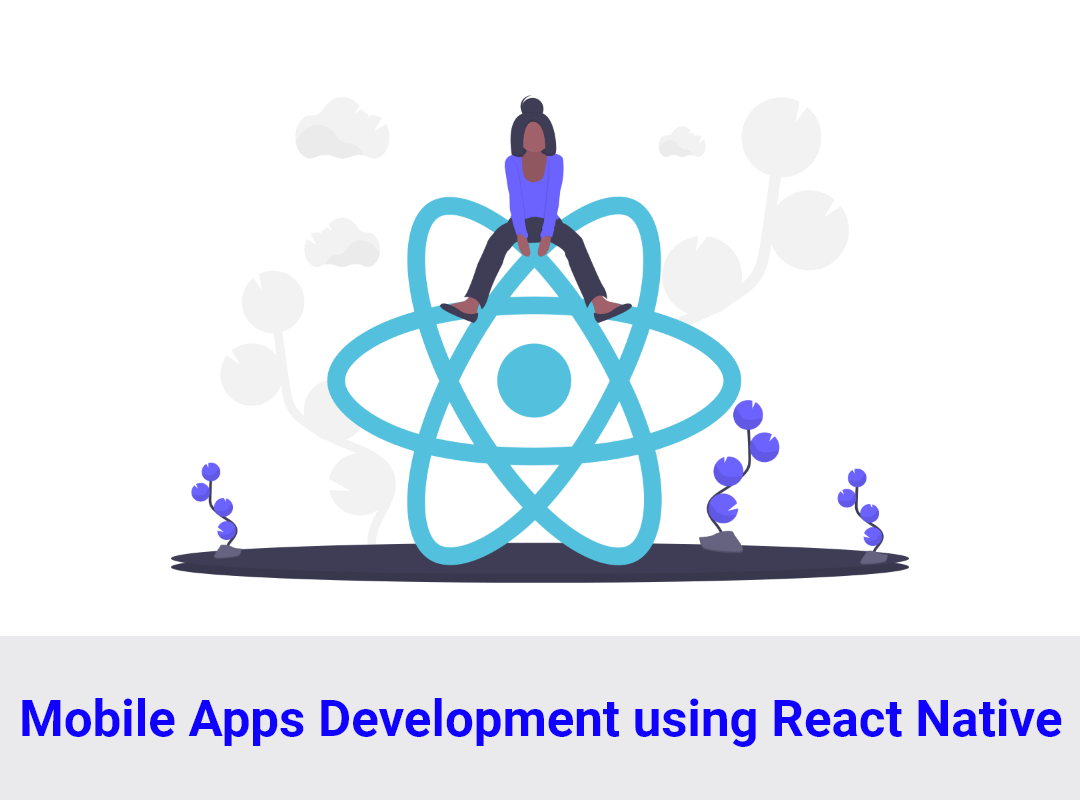In today’s digital age, mobile applications play a pivotal role in how we interact with technology. With a significant portion of the global population relying on smartphones, the demand for mobile applications has skyrocketed. For aspiring developers, entering the mobile development space can seem daunting, especially if you’re starting from scratch. However, with the right tools and knowledge, creating native iOS and Android apps can be an accessible endeavor. One such powerful tool is JavaScript, a versatile programming language widely used in web development. This guide explores how JavaScript simplifies native app development and highlights EasyShiksha.com’s role in helping you master this skill.
Top Courses in Mobile App Development
The Rise of Cross-Platform App Development
The mobile app industry is thriving, with users expecting apps to be available on both iOS and Android platforms. Building separate codebases for each platform is time-consuming, expensive, and resource-intensive. Cross-platform development resolves this issue by allowing developers to write a single codebase that works on both platforms, ensuring:
- Cost Efficiency: Save time and money by avoiding duplicate efforts.
- Faster Time-to-Market: Develop and deploy apps quicker than traditional methods.
- Consistent User Experience: Maintain uniformity across platforms for users.
Why JavaScript is the Best Choice for Cross-Platform Development
JavaScript, coupled with frameworks like React Native and NativeScript, has revolutionized the way mobile apps are built. Here’s why JavaScript is ideal for cross-platform app development:
- Universal Language: As a web development cornerstone, JavaScript’s widespread usage makes it accessible to developers worldwide.
- Reusable Code: Write once and reuse code across both iOS and Android, reducing redundancy.
- Rich Ecosystem: JavaScript boasts a massive library of tools, plugins, and community support.
- Ease of Learning: Beginners can quickly adapt, especially if they have web development experience.
- Native-Like Performance: Frameworks like React Native enable apps to perform as smoothly as those built with native languages.
Getting Started with Mobile Development Using JavaScript
Step 1: Choose the Right Framework
The first step in your journey to create native apps using JavaScript is selecting the right framework. Here are two popular options:
- React Native: Developed by Facebook, React Native allows developers to create mobile applications using React, a JavaScript library for building user interfaces. It enables the development of high-performance apps that utilize native components, resulting in a user experience that feels like a native application.
- Ionic: Ionic is another powerful framework that uses web technologies (HTML, CSS, JavaScript) to develop hybrid mobile apps. It’s particularly advantageous for web developers looking to create mobile applications without needing extensive mobile-specific knowledge.
Step 2: Set Up Your Development Environment
Once you’ve chosen a framework, you’ll need to set up your development environment. This typically involves:
- Installing Node.js, which includes npm (Node Package Manager), allowing you to manage your project dependencies.
- Following the official documentation to install your chosen framework.
- Setting up an Integrated Development Environment (IDE) like Visual Studio Code for efficient coding.

Step 3: Build Your First App
Start with a simple project, such as a calculator or a to-do list application. This hands-on approach will help you understand the basic concepts of mobile development, including component creation, state management, and navigation between screens.
Step 4: Test Your Application
Testing is crucial in mobile app development. Both React Native and Ionic provide tools for testing your applications on simulators and actual devices. Testing on multiple devices ensures that your app performs well across different screen sizes and operating systems.
Step 5: Deploy Your App
Once your app is developed and thoroughly tested, it’s time to deploy it to the Apple App Store and Google Play Store. Each platform has its guidelines, so be sure to adhere to the requirements for a successful submission.
Top Courses in Programming Language
What Will You Learn?
By enrolling in this course, you’ll gain expertise in:
1. JavaScript Fundamentals: Strengthen your coding foundation.
2. React Native Framework: Learn how to create apps with React Native’s powerful tools.
3. UI/UX Design for Mobile: Build visually appealing and user-friendly interfaces.
4. API Integration: Connect your apps to external services for added functionality.
5. Debugging and Deployment: Ensure your apps are error-free and ready for the App Store and Google Play.
Advantages of Choosing EasyShiksha
1. Interactive Learning: Engage with quizzes, assignments, and peer discussions to deepen understanding.
2. Affordability: Access high-quality education without breaking the bank.
3. Flexibility: Learn anytime, anywhere, with lifetime access to course materials.
4. Real-World Skills: Gain practical knowledge that is directly applicable in professional settings.
Tips for Effective Learning
1. Start Small: Begin by building simple apps to understand the basics of JavaScript and frameworks.
2. Practice Regularly: Consistent coding practice is key to mastering app development.
3. Engage with the Community: Participate in forums and developer groups to share knowledge and solve challenges.
4. Explore New Tools: Experiment with additional libraries and plugins to expand your skillset.
5. Stay Updated: Mobile app technology evolves rapidly, so keep learning and adapting to new trends.
- Career Helper suggests occupations that correspond to your interests, values, aspirations, and personality.
-
Career Helper consists:
- IQ Test
- Basic Test
- Advance Test
- Psychometric Test
- Know your talents, skills, strengths, and weaknesses.
- Choose the profession that suits you best
- Get best career guidance by Experts.
- Know your career options with Easyshiksha. There are a lot of interesting career options in India you can consider after school and Indian colleges are now offering you some unique courses.
FAQs: Frequently Asked Questions
Q1. What is cross-platform app development?
Cross-platform development allows developers to write a single codebase that works across multiple platforms like iOS and Android, saving time and resources.
Q2. Why is JavaScript popular for mobile app development?
JavaScript’s versatility, ease of learning, and integration with frameworks like React Native make it an excellent choice for building efficient, high-performance mobile apps.
Q3. Can beginners learn app development with JavaScript?
Absolutely! JavaScript’s simple syntax and vast resources make it beginner-friendly. EasyShiksha’s course is designed to guide learners with no prior experience.
Q4. Do I need to know other programming languages for this course?
No, JavaScript is sufficient for creating cross-platform apps using the frameworks taught in the course.
Q5. How long does it take to complete the EasyShiksha course?
The course duration varies depending on your pace, but most learners complete it in 4–6 weeks with regular practice.
Q6. Will I be able to publish my app on App Store and Google Play?
Yes, the course covers the steps to debug and deploy your app on both major platforms.
Q7. Does EasyShiksha provide career support after completing the course?
While EasyShiksha focuses on skill-building, the certificate you earn can significantly boost your resume and improve job prospects.
Read Also: Revolutionize Your Coding Skills: Build Mobile Apps with Ionic and Firebase
Get Courses: free online courses with certificates
Conclusion
The ability to “code once and deploy everywhere” is revolutionizing mobile app development. With JavaScript at the forefront, developers can create high-quality native applications for both iOS and Android efficiently. By leveraging frameworks like React Native and Ionic, you can save time and resources while reaching a wider audience. As you embark on this exciting journey, platforms like EasyShiksha.com can provide the guidance and resources you need to succeed. Embrace the power of JavaScript and start building applications that can make a difference in the mobile landscape!








































.jpg)





























